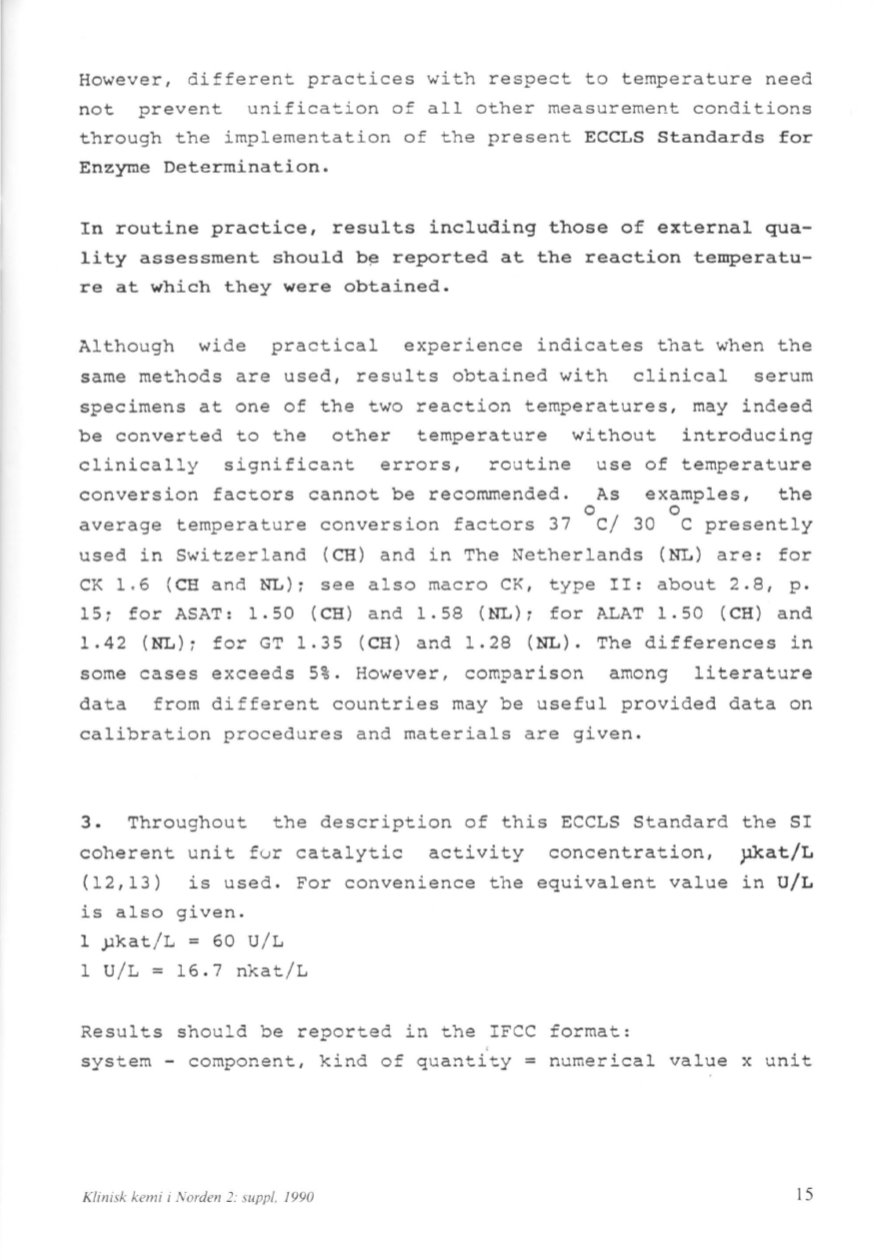
However, different practices with respect to temperature need
not prevent unification of all other measurement conditions
through the implementation of the present ECCLS standards for
Enzyrne Determination.
In routine practice, results including those of external qua–
lity assessment should
b~
reported at the reaction temperatu–
re at which they were obtained.
Although wide practical experience indicates that when the
same methods are used, results obtained with clinical serum
specimens at one of the two reaction temperatures, may indeed
be converted to the other temperature without introducing
clinically significant errors, routine use of temperature
conversion factors cannot be recommended. As examoles, the
o
o -
average temperature conversion factors 37 C/ 30 C presently
used in Switzerland (CH) and in The Netherlands (NL) are: for
CK 1.6 (CH
and~~);
see also macro CK, type II: about 2.8, p.
15; for ASAT: 1.50 (CH) and 1.58 (NL); forALAT 1.50 (CH) and
1.42 (NL); for GT 1.35 (CH) and 1.28 (NL). The differences in
some cases exceeds 5%. However, comparison among literature
data from different countries may be useful provided data on
calibration procedures and materials are given.
3. Throughout the description of this ECCLS standard the SI
coherent unit f u r catalytic activity concentration, pkat/L
(12,13) is used. For convenience the equivalent value in U/L
is also given.
l pkat/L = 60 U/L
l U/L= 16.7 nkat/L
Results should be reported in the IFCC format:
'
system - component, kind of quantity = numerical value x unit
Klinisk kemi
i
Norden 2: supp/, 1990
15


